June 14, 2025 | 21:51 GMT +7
June 14, 2025 | 21:51 GMT +7
Hotline: 0913.378.918
June 14, 2025 | 21:51 GMT +7
Hotline: 0913.378.918
For over a century, tea from the Tan Cuong district (Thai Nguyen city) has been renowned both locally and internationally for its unique delectable flavor. With a total area of about 2,000 hectares, the value of Tan Cuong specialty tea might exceed half a billion VND per hectare due to the synchronized application of solutions. Not only have tea trees aided Tan Cuong tea growers in becoming wealthy, but they have also contributed directly to the growth of Vietnam's tea business.
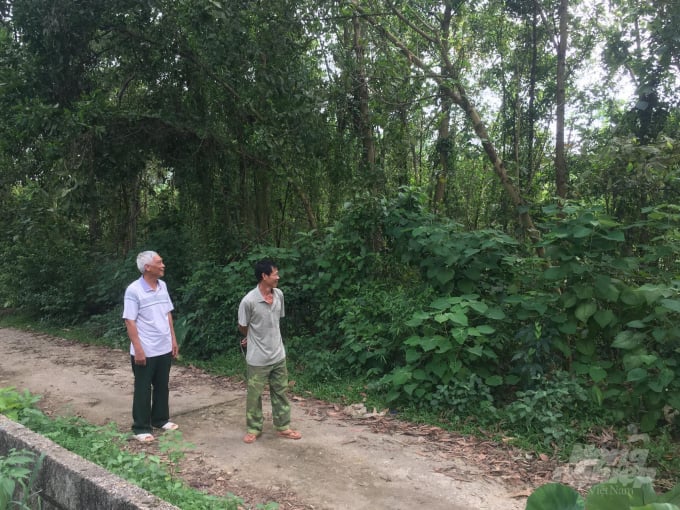
The ancestral land of tea in Nam Son village now only has acacia forests while ancient tea gardens have completely disappeared. Photo: Dong Van Thuong.
Guoc village is an old area situated at the foot of Guoc mountain in Tan Cuong commune. The village is the birthplace of Tan Cuong tea and the Thai Nguyen tea culture festival, which began in the late 1910s when Mr. Vu Van Hiet, also known as Mr. Doi Nam (Hung Yen province), brought the region's first tea variety to plant and established a tea plantation, as well as a tea processing workshop. "Canh Hac" tea brand was well-known across the nation and sold to other countries like France, India, and China, and was termed "Thai Nguyen's first renowned tea."
The first spring tea festival in Guoc village, as well as the first tea festival in Thai Nguyen, was held in 2004, in connection with the Spring Festival, and included traditional tea profession activities such as delicious tea contest and tea brewing contest among others.
The spring tea festival in Guoc village was celebrated yearly for the following several years. In 2005, the event's scope was extended to include areas outside of Tan Cuong commune.
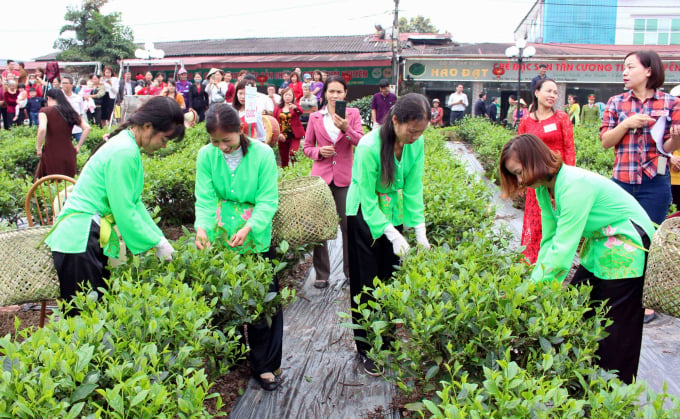
Thai Nguyen Tea Culture Festival has widely promoted Thai Nguyen tea products both at home and abroad. Photo: DVT.
In 2006, the event was renamed "Tan Cuong Spring Tea Festival" and was hosted by Guoc village. Thai Nguyen province conducted the inaugural Thai Nguyen Tea Culture Festival in 2007. The event drew almost one hundred participants from tea villages, metropolitan areas around the province, and local and international enterprises.
As a result of the spring tea festival in Guoc village, the province has organized numerous Thai Nguyen International Tea Festivals, providing opportunities to promote investment, trade, and tourism, as well as the image of the land and people, of Thai Nguyen tea, and Vietnamese tea with international friends.
Indeed, the Thai Nguyen tea brand has risen to prominence as a result of these events. The stele in Guoc village states, "Here is buried the tale of Tan Cuong's first renowned tea and the Thai Nguyen Tea Cultural Festival, Vietnam."
Mr. Nguyen Duy Tien, 70, a representative of Nam Son hamlet, said that the region continued to grow antique tea trees until they were carried to tea festivals and marketed as ornamental plants in early 2000. As a consequence, those old tea plants perished in Tan Cuong tea's native homeland.
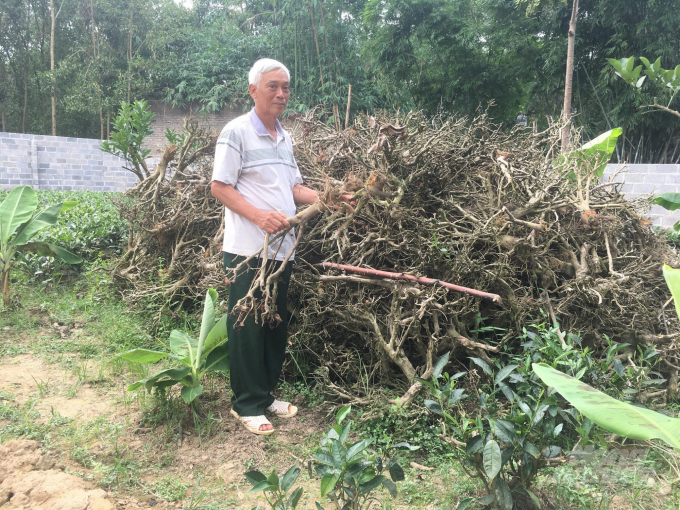
Many tea gardens in Nam Son village were cut down and replaced by acacia trees. Photo: Dong Van Thuong.
In recent years, many tea-growing families in neighboring Tan Cuong villages have spent meticulously in producing high-quality tea while also creating a brand, relegating Nam Son tea to second place due to growers' lack of concern.
At the moment, the price of midland dried bud tea in Tan Cuong's "profitable" villages has risen to over VND 1 million per kg; bud tea typically costs more than VND 250,000 per kg, while the finest midland tea in Nam Son sells for less than VND 150,000 per kg.
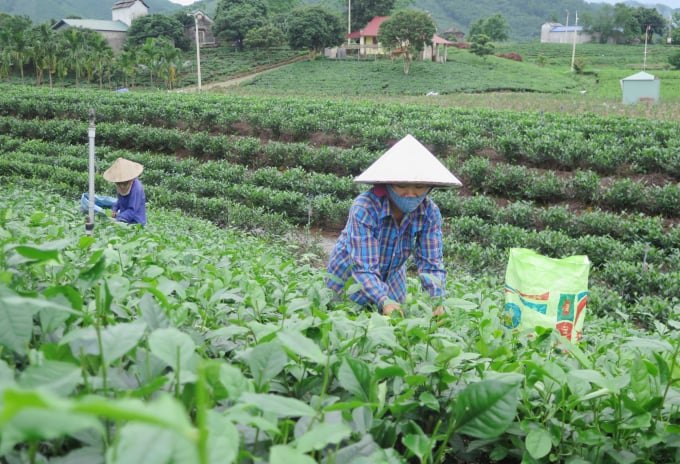
Today, high-yielding tea varieties have completely replaced ancient tea varieties in Tan Cuong tea land. Photo: DVT.
Tien lamented: "Only a few families in the community continue to roast tea; the others sell fresh buds at cheap costs or stop picking entirely. Previously, 100% of families produced tea, but now the number is just counted on the fingers."
Nam Son is currently covered in thick hills and forests, creating an atmosphere reminiscent of highland hilly settlements; it's hard to realize this is the location of the original Tan Cuong tea plants. Believe it or not, this terrain has been associated with tea bushes for over a century, since it is part of a world-renowned tea district in both the nation and the globe.
Translated by Linh Linh
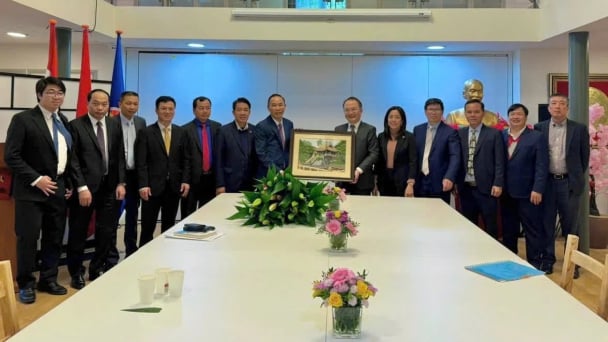
(VAN) The working delegation from the Ministry of Agriculture and Environment conducted an important trip to the Netherlands to strengthen strategic partnerships and sustainable development in the agricultural sector.

(VAN) The letter ‘A Plea from the Ocean’ not only evokes emotion but also awakens the human conscience to the responsibility of protecting life on Earth.

(VAN) The Department of Agriculture in South Africa has announced the country’s first mass vaccination of poultry to prevent local birds from contracting avian influenza.

(VAN) Establishment of the Mekong Delta Regional Agricultural Linkage Center, aiming for a closed value chain, deep processing, trading platforms, and international market connectivity.

(VAN) Gia Lai province has recently recorded 460 rare species of animals and plants, contributing to forest conservation and biodiversity planning in the region.

(VAN) Ms. Caroline Beresford, New Zealand Ambassador to Vietnam, expressed confidence that agricultural cooperation between Vietnam and New Zealand will develop sustainably, be climate-resilient, and promote gender equality.

(VAN) Vietnam reaffirms its commitment to international cooperation in fostering sustainable and responsible fisheries while ensuring resilient livelihoods for small-scale fishing communities.